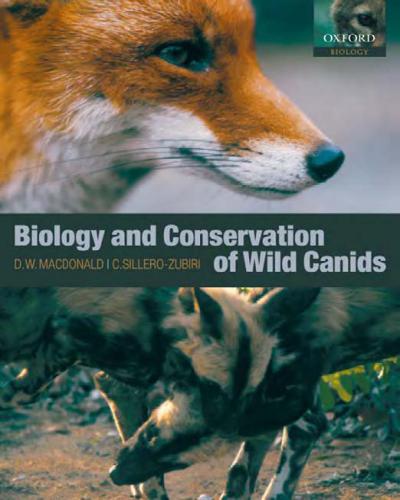The Biology and Conservation of Wild Canids, Wild canids are fascinating ancestors of the domestic dog. This definitive book on aspects of canid biology and the conservation of wolves, dogs, jackals and foxes covers topics relevant to modern conservation science, and features detailed case studies of many canid species across the globe.
The Biology and Conservation of Wild Canids

A must-have for all scientists studying carnivores, predators, cooperative breeding, and social systems. A useful text for both undergraduate and graduate courses in behavioural ecology and conservation biology, and engaging reading for a wide range of wolf and domestic dog enthusiasts.
The book has three parts. The first part consists of several overview chapters on canid society, infectious diseases, and similar general topics. The final section is a single chapter on conservation, which provides a very strong summary though it fails to break new ground. The middle part, and the bulk of the book, is a series of case studies of canids, both well-known and unfamiliar.
Some of these case studies (i.e., those on red and gray wolves, or island foxes) focus intensively on management issues. Other case studies seek basic information about poorly-known species (i.e., bat-eared foxes), or seek to make some purely-biological point (i.e., that Finnish raccoon dogs are becoming a separate species from Japanese raccoon dogs). A few other chapters straddle the biological and management perspectives, extending moderate bodies of scientific knowledge and discussing management problems briefly (i.e., Ethiopian wolves).
Like the focus, the quality of these chapters varies widely. It seems that the editors never really got control of their contributors and were unable to force a conservation or management perspective on everyone. This is especially ironic since one of the co-editors was a co-author of one of the chapters that fits least well.
As a result, the book will be of limited interest to the general reader (and I cannot say how interesting it is to the specialist). The chapters on wolves are interesting but the material in them is available elsewhere because these species are so well known.
RAR File Password: pdflibrary.net
Password: pdflibrary.net
